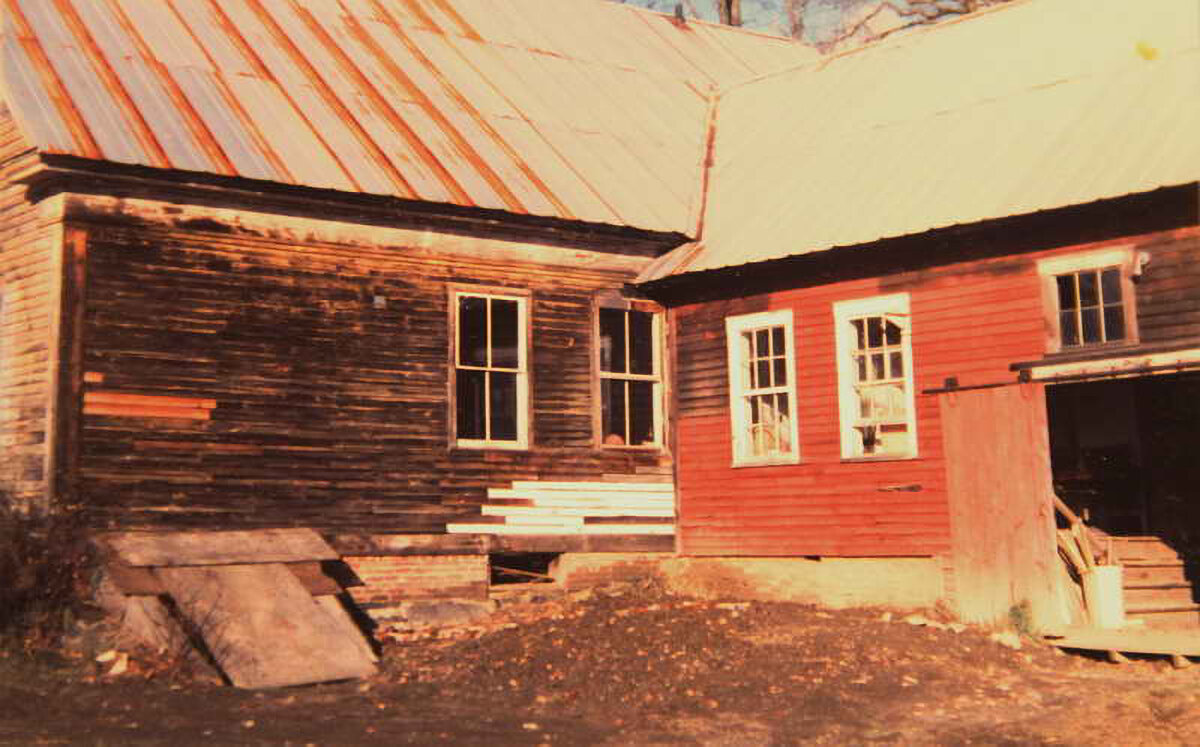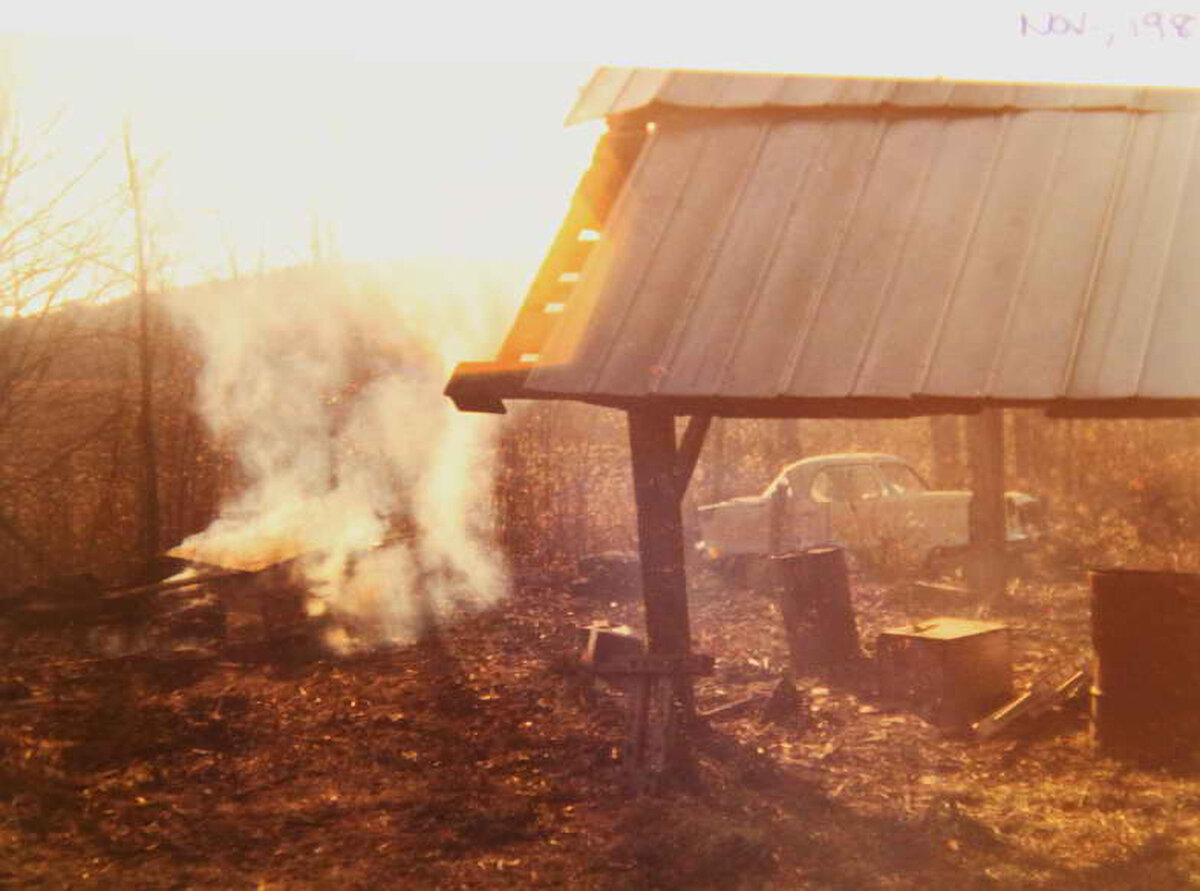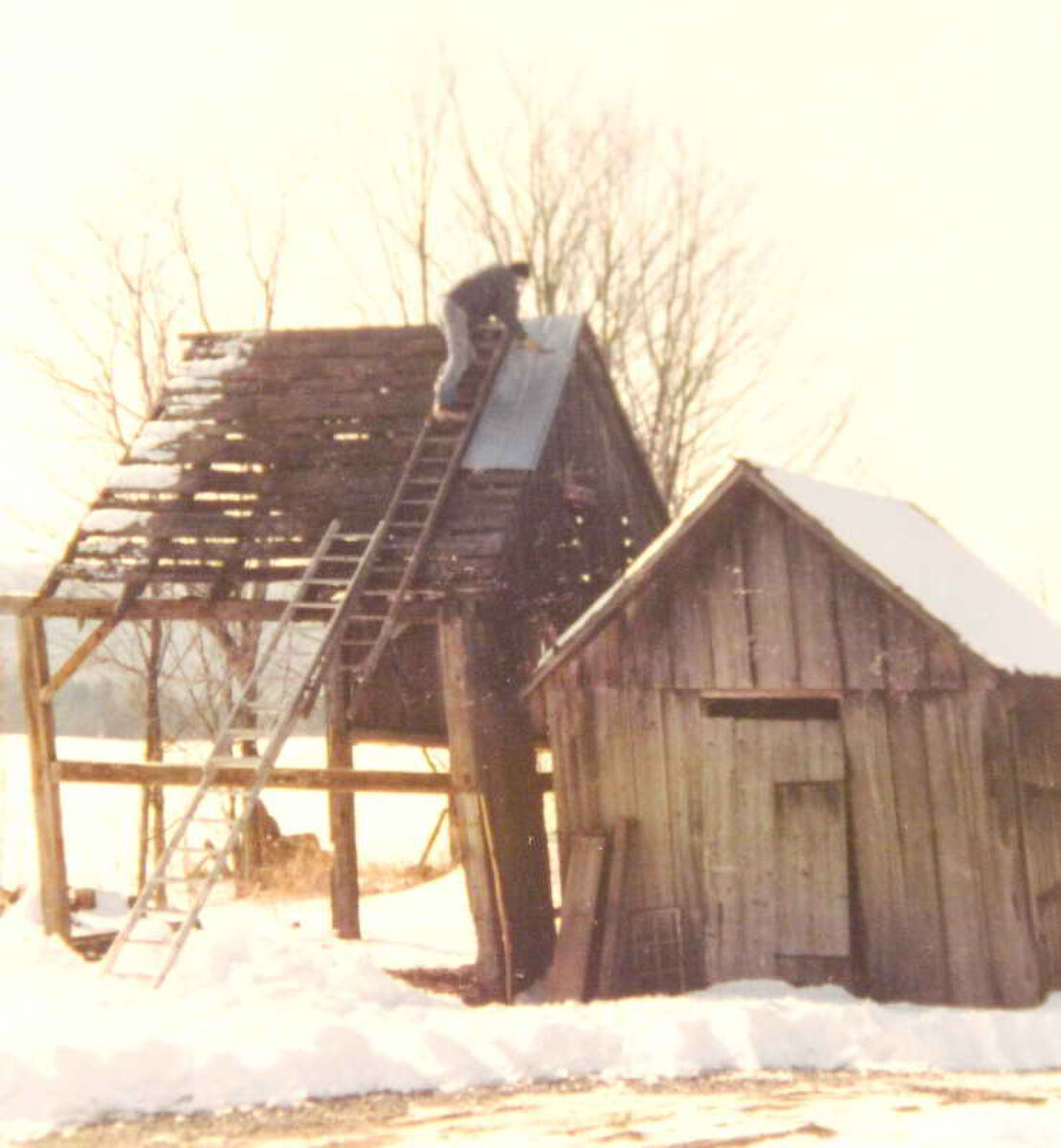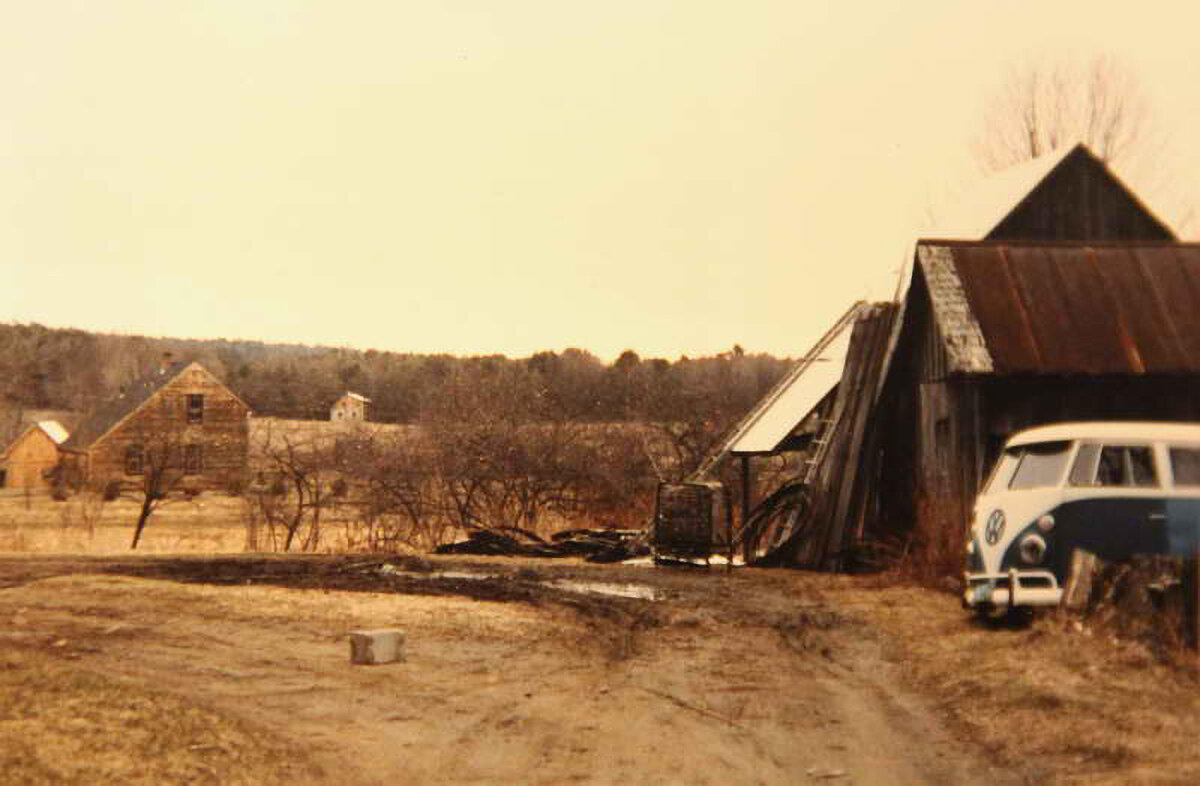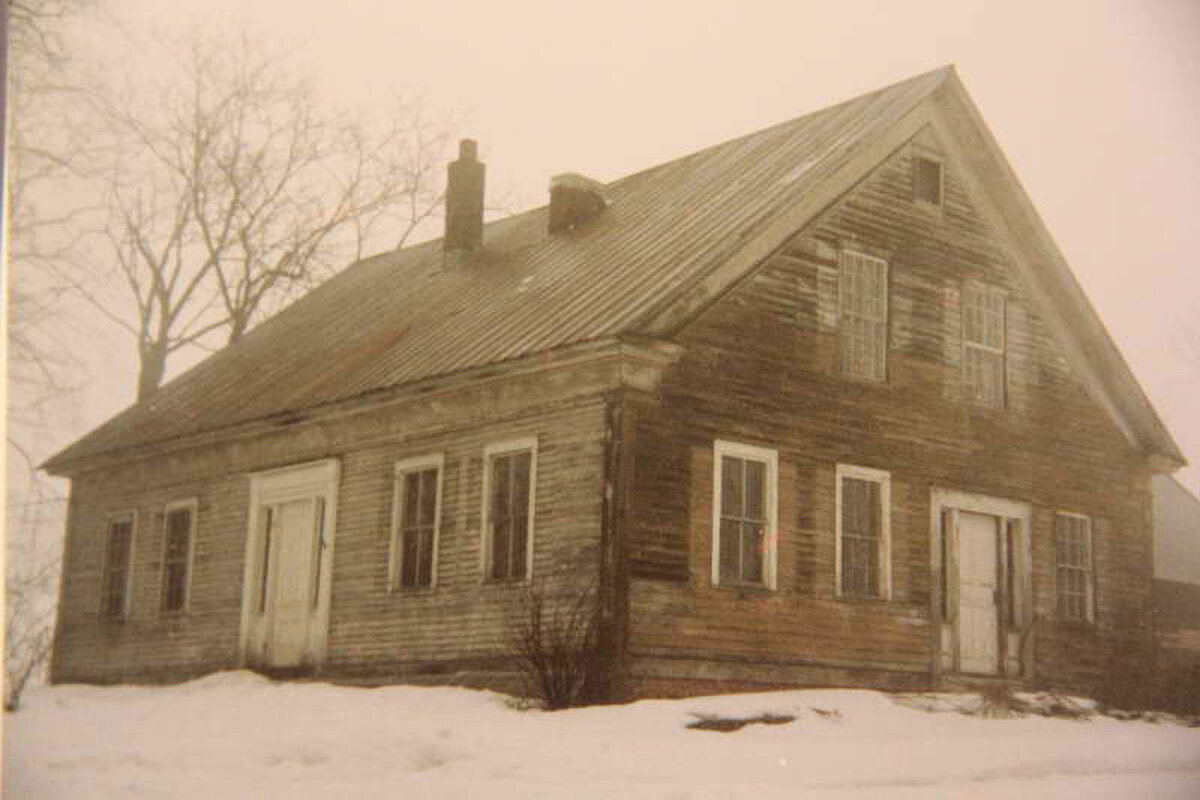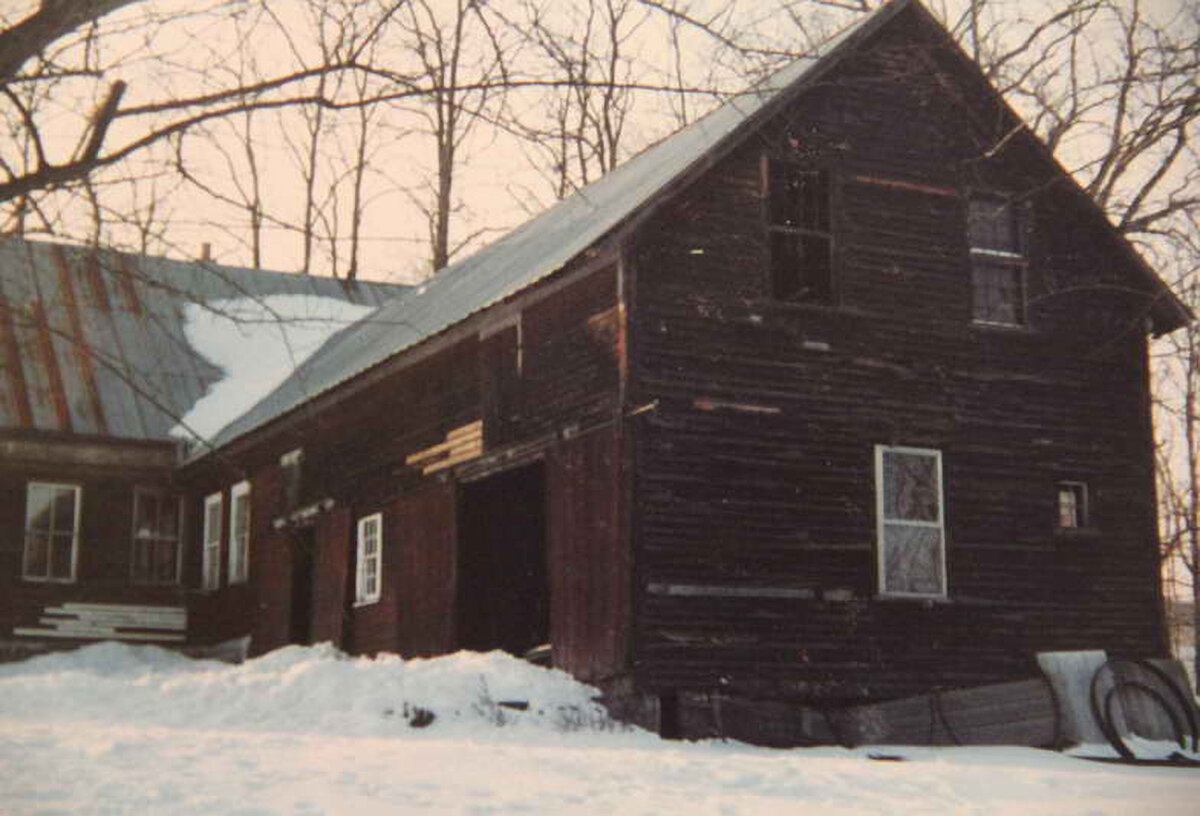That same view today. Photo ©Joseph Valentine
Mary, our five year old son Nate, and I moved into our nearly 200 year old Vermont farmhouse in early December, 1983 in a light snowstorm. Corncobs formed the only insulation in its walls. We looked out through single panes of wavy glass to see three broken down junk cars, the frame of an 18’ square barn, the fourth corner of which was held up by an old building jack. At the far end of the 1 ½ acres we bought stood a long-neglected 100 year old apple tree we would learn years later was a heritage tree – a St. Lawrence. We were cold that winter but we were in a fine old house that just needed our love and attention. We were undaunted. We were home.
Gordon and Nate begin under the 100-year old St. Lawrence apple tree.
In early April, six square feet of loamy topsoil appeared from under the melting snow. We were on it. And as April turned to May, the melting snow revealed three quarters of an acre of brambles, scattered scrap metal that would fill seven heaping pick-up truck loads. Rotting boards, saplings, bramble roots, bottles and cans and leather strapping and…. Anything that would burn and held no value went onto upwards to fifteen burn piles. For a glimpse of what we were facing, see the photos below.
And as we worked, we came to realize the 1 ½ acres was of 18” deep rich topsoil on which this old hill farm had once flourished. That dark, rich topsoil was sitting atop hardpan, largely granite ground up and then deposited by Ice Age glaciers. That layer of hardpan would slow drainage and that was a good thing.
And as we three worked like the children of farmers we are, indications of the past began to surface: over a dozen 6’ granite fenceposts; 120 feet of stone barn foundation and a cupped concrete silo foundation as well as what had been the floor of the milking parlor for six cows.
All these facets from the past would provide invaluable clues as we developed our 1 ½ acre garden that we created through hard work and passion over the next 35 years. We were going to create a new garden on an old place.
I took the above photos in the winter of 1984, shortly after Mary, our 5 year old son Nate and I moved into this house, undaunted. We three began work on this long neglected place that had been wrested from the wilderness in the 1790's by the Ranney Family. (Philip Ranney, 7th generation, lives just up the road from us today.) He, like Mary and me, are children of farmers. Mary grew up on a diversified farm in the North Cotswold Hills of Gloucestershire. I am from a family orchard in Northwestern Connecticut. Our brothers still look after both farms. We know what work is. The balance of this website explores what we have managed to accomplish as self-taught garden designers over the intervening 36 years, while at the same time restoring this beautiful old home that was built 25-30 years after The American Revolution.
